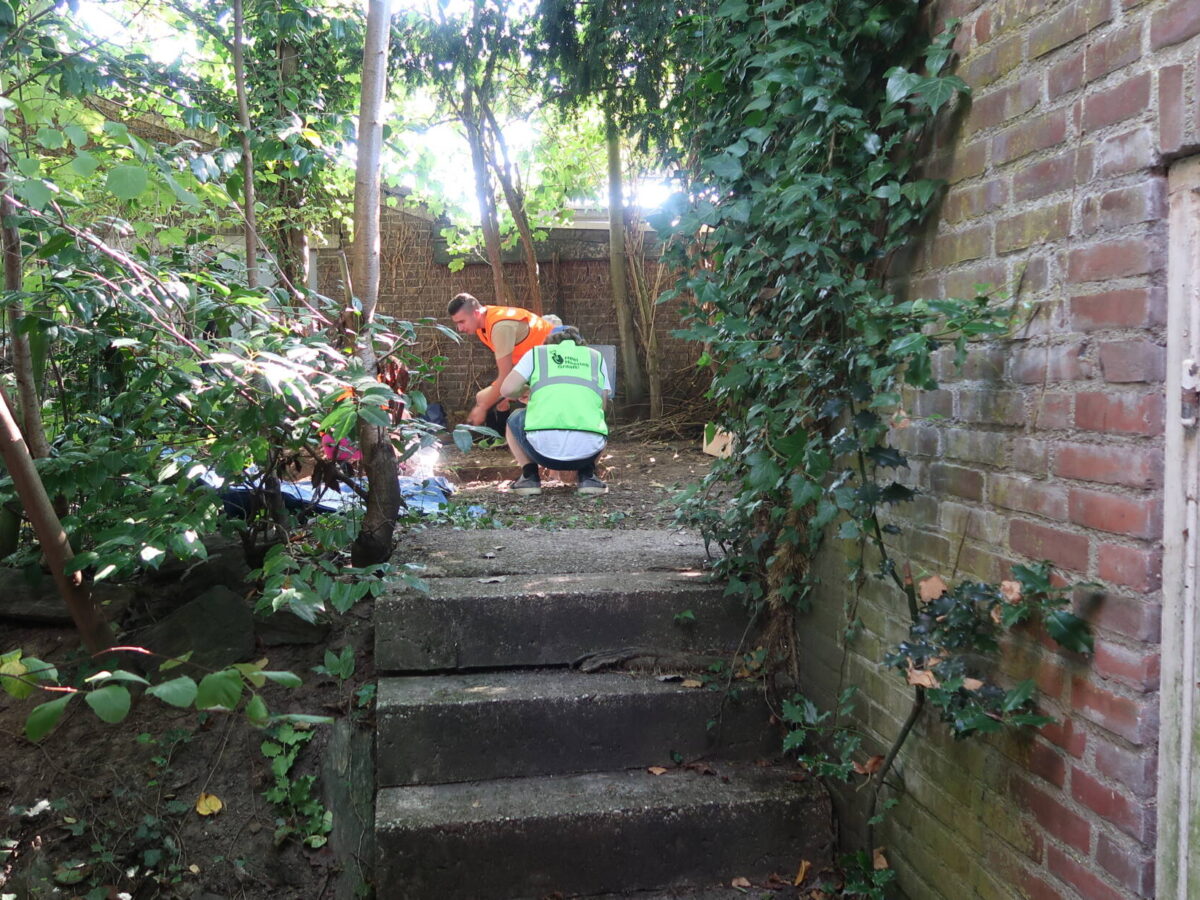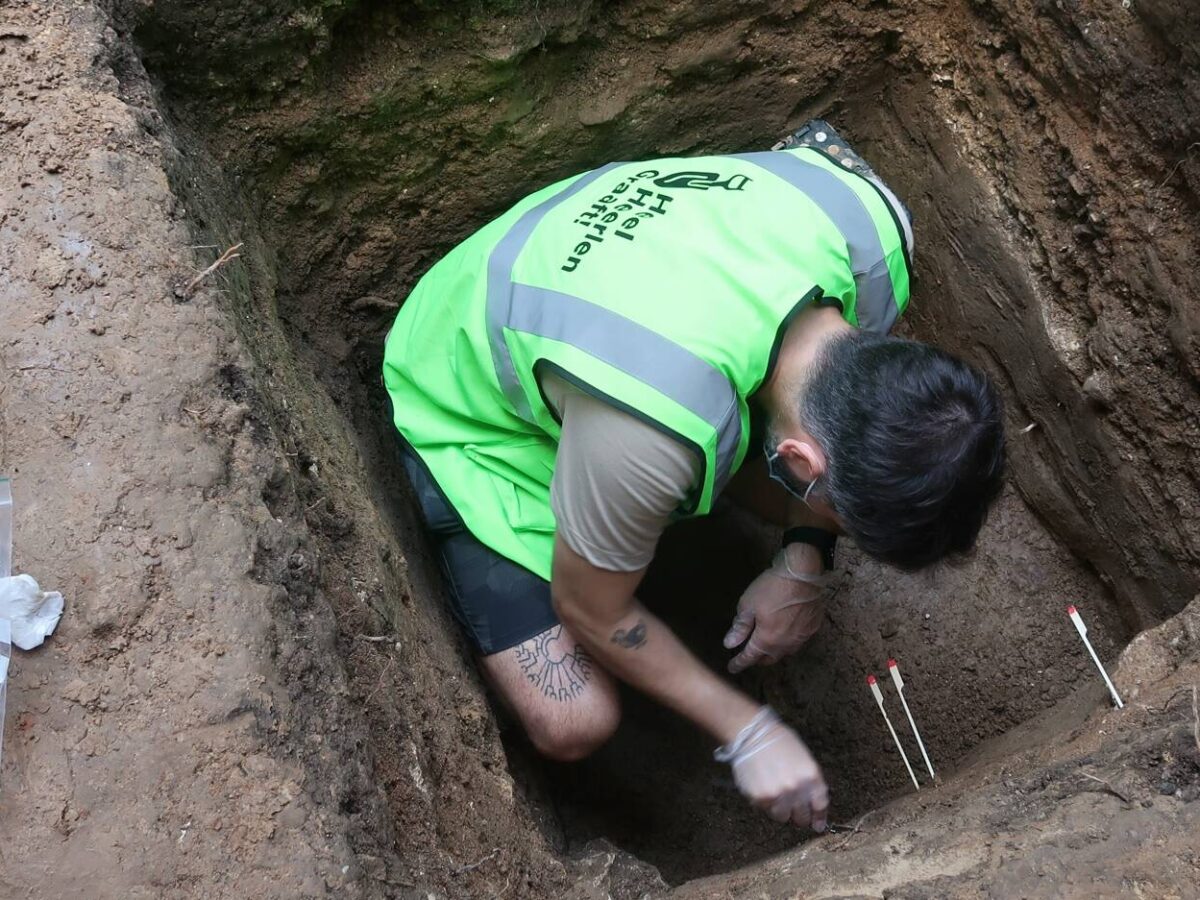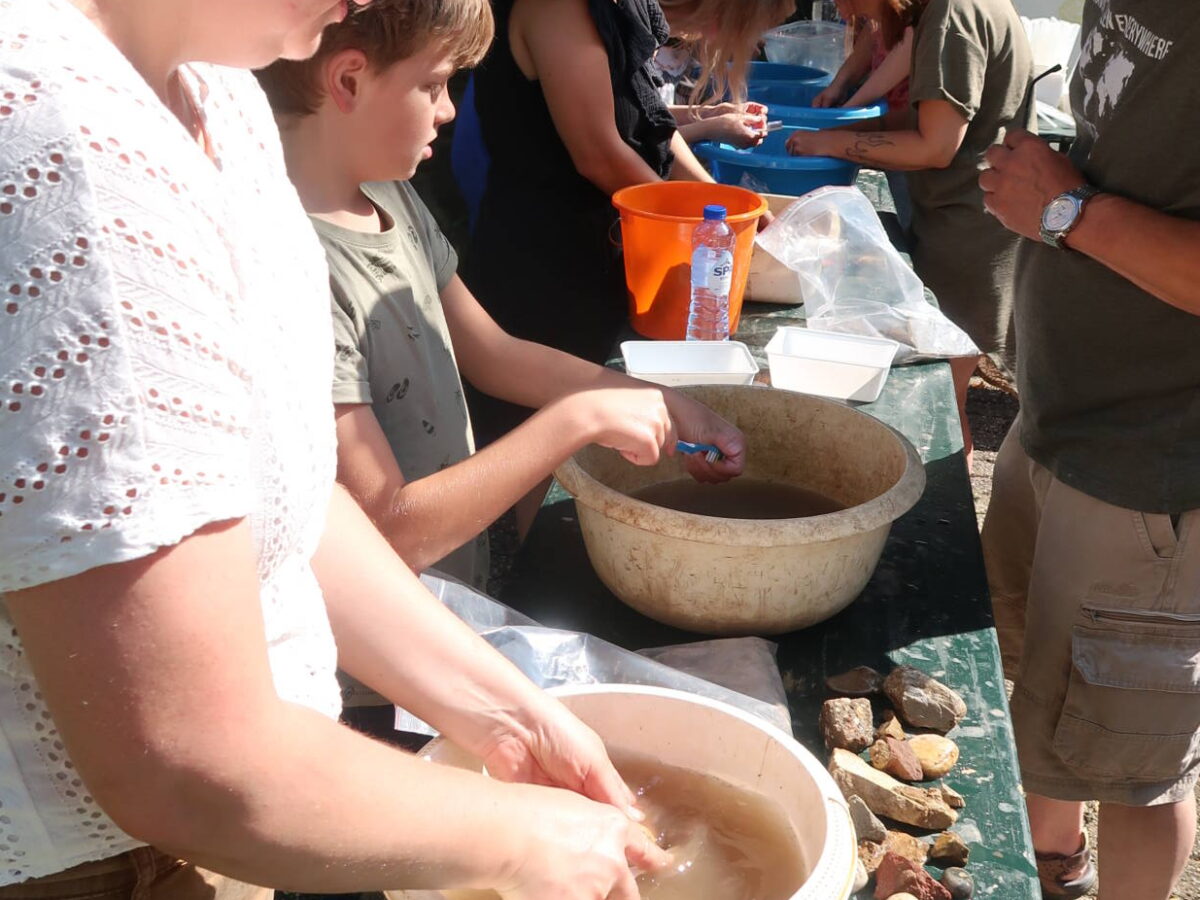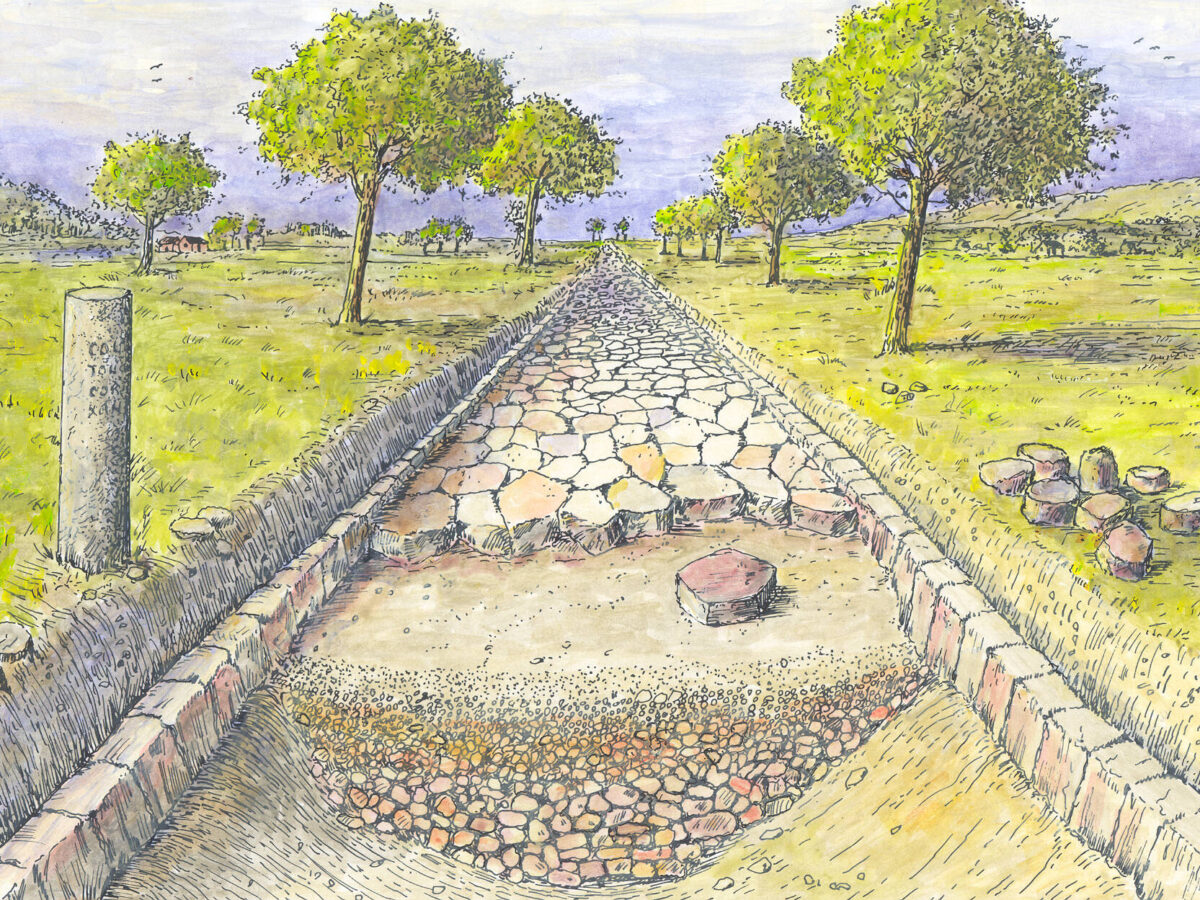Searching for Roman Heerlen with the newest technology
Author: Harry Lindelauf
Photography: Harry Lindelauf en Annemiek Mommers

It is archaeology on — literally — the square meter. But the action “Heel Heerlen graaft” (“All Heerlen Digs”) on Saturday 9 and Sunday 10 September 2023 is in fact unique in its design and scale. It is the largest search operation together with residents ever in the Netherlands, and for the first time, ancient DNA is being searched for on this scale.

At 25 locations in the gardens of residents and in public green areas, an equal number of one-square-meter pits were dug during the weekend. At a depth of 60 to 120 centimeters lies the street level from Roman times. Archaeologists recognize that level by the composition of the soil layers and often also by remains of Roman origin such as pieces of roof tile or other building material. All pits are located in the Roman part of Heerlen or along the two major roads that crossed near the Thermenmuseum: the Via Belgica (Cologne–Boulogne-sur-Mer) and the Via Traiana (Trier–Xanten).
CSI-like techniques
Residents and other volunteers from Heerlen, Maastricht, and even from Amsterdam enthusiastically got to work on Saturday morning under tropical conditions. Excavation was done centimeter by centimeter, always under the watchful eye of archaeologists. On Sunday, specialists joined to search for ancient organic material from which DNA can be extracted. In eight pits, soil samples were taken in a CSI-like manner, which will be analyzed in the coming months at the University of Copenhagen.
After that, the puzzling begins at Wageningen University. The ancient DNA has disintegrated over time into fragments, just as only fragments of Roman roof tiles and pottery usually remain. Copenhagen is expected to deliver about 70 million A4 pages of DNA data. These will be used to piece together matches with complete DNA of known origin.


Becoming an archaeologist
“Exciting” is the most frequent answer to the question of what it is like for a resident or amateur archaeologist to be allowed to dig into the past. “And besides exciting, it’s also fun to do,” says Tim Rams from the pit in his front garden on Laan van Hövell tot Westerflier. He finds a few pottery shards as a reward for the rather tough digging work. His neighbor Martijn Klinkenberg also takes part. The trigger for him was a visit with his children to the Thermenmuseum. His childhood dream — “to become an archaeologist, really!” — is becoming a little bit reality for the economist.
Everywhere, finds or supposed finds are always exciting for the participants: pieces of roof tile, floor tiles, pottery shards, bone fragments, bits of charcoal. And sometimes something from modern times, even down to a ten-cent coin.
From coin to roof tile
That distant past quickly comes to light on Saturday in the garden of Peter Soudant at the beginning of the Tempsplein. His house stands on or directly next to the spot where archaeologists have found the foundations of a larger building from Roman times.
In his backyard, volunteers — grandfather, father, and daughter Jamin from Maastricht — find at a depth of 80 to 90 centimeters a layer of Roman lime mortar about two to three centimeters thick. Deeper still, small pieces of charcoal appear. But by then, a considerable amount of roof tile, tile, and pottery fragments has already been collected through digging.


From frontier to border region
Together with more typical finds such as fragments of roof tiles and pottery, the action “Heel Heerlen graaft” should further complete the picture of Coriovallum (Roman Heerlen). And not only that: the action is part of the project Constructing the Limes. The term “limes” refers to the northern border of the Roman Empire, which was formed by the Rhine. Whereas research long focused on a narrow strip along the border, this project now examines the wider frontier region. Who lived there, where did they come from, what did they eat, where was it produced, and with whom did they trade?
Heerlen/Coriovallum is relevant
All these questions are also being explored in Heerlen. Heerlen/Coriovallum is relevant because of the major Roman roads, its extensive pottery industry, and the agriculture on the large Roman farms in the surrounding loess region.
In the Limes project, five universities and one university of applied sciences are working together. Fieldwork, laboratory research, database analyses, research in archaeological depots, the study of letters and political speeches — it should all become visible in May 2026 when the results are published.
“Heel Heerlen graaft” is a collaboration between the Municipality of Heerlen, Constructing the Limes, NWO, the Thermenmuseum, Restaura, De Vondst, LGOG, and dozens of volunteers.

